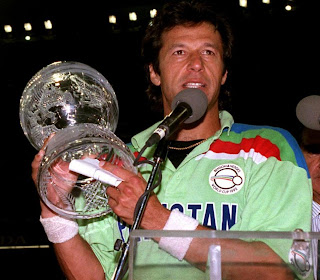In the Part 1 of this series of blog, I mentioned that
“chances for Pakistan to lift the Asia Cup are definitely at risk”. So I had to
justify my opinion but thanks to the PCB providing me some valuable points to
score by picking an imbalance, unformed and almost impotent outfit for the Asia
Cup 2012.
The squad is comprised of six batsmen Misbah ul Haq,
Nasir Jamshed, Asad Shafiq, Azhar Ali, Younus Khan and Umar Akmal, three
all-rounders Shahid Afridi, Muhammad Hafeez and Hammad Azam, two spinners Saeed
Ajmal and Abdul Rehman, three quick bowlers Umar Gul, Aizaz Cheema and Wahab
Riaz and Sarfraz Ahmed to take the responsibility of wicket keeping, but I
doubt the non-regular Umar Akmal would likely to perform this job again instead
of specialist Sarfraz.
The 10-day event is starting from March 12 in Dhaka,
Bangladesh. Besides the host Pakistan, Sri Lanka and the defending champion
India are the other team to contest for the continental championship. The final
will be played on March 22, but earlier there is also another date of Mach 18 to
get noted down, when the customary rivals India and Pakistan will face each other.
Come back to the selection of the squad, where focus
has been given on strategy of spin attack to the extent, that the department of
fast bowling looks incomplete and toothless. Relying solely on spinners to bowl
out teams like India and Sri Lanka in fifty overs is senseless. Do not forget
this strategy was recently tried out in UAE, but it didn’t pay well even
against England’ cricketers, who are supposed to be weaker on spin bowling.
Playing against India and Sri Lanka require a good
pair of specialist fast bowlers, who could root out wickets at both ends from
the very start of match. At the moment Pakistan just have one reliable specialist
Umar Gul while both Wahab and Aizaz are not worthy enough to create difficulties
for the batting line-ups of India and Sri Lanka on the batting-friendly wickets
of subcontinent. Although he didn’t leave impressions against England, despite Junaid
Khan could be a pivotal partner of Gul specially against India but
unfortunately an injury has ruled him out. In the similar mold, in-form Muhammad
Sami could offer at least more variation in bowling than Cheema but selectors
overlooked the experienced campaigner.
Looking at the
squad it feels that Misbah would try out again to open the attack at one end with
a part-timer either Muhammad Hafeez or Hammad Azam, if the youngster features
in playing-eleven. This plan would hardly works in favour of Pakistan and might
cost otherwise by bringing Umar Gul under pressure at the other end. Opening
the attack with a specialist spinner like Abdul Rehman would also not workable because
both India and Sri Lanka have the quality openers who can open their arms on spinner
from the very first ball.
Then on subcontinent pitches it is more useful to play
with three seamers and one specialist spinner, but with the selected squad
Misbah doesn’t look in mood to include three seamers at a time. Pakistan should
have one more seamer in the squad in place of a specialist batsman to balance
the attack, but banking upon fast bowlers is not in the agenda of Misbah ul
Haq, therefore much emphasis has been given on spin attack of Ajmal, Rehman,
Afridi and Hafeez. It is an old-fashioned
ploy and Pakistan would really be just lucky if it does work in the tournament.
(To be concluded)







